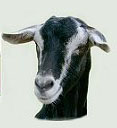|
Getting your first horse or pony
|
Colors and Markings Equine coat coloring is controlled by many genes acting in combination to produce a multitude of variations in pigmentation. These inherited genes are located on paired structures known as chromosomes, half of these chromosomes come from the sire and half from the dam. There are both dominant and recessive genes. For example the chestnut chromosome is recessive to other colors, bay is dominant to black, and gray is dominant to bay and black. Horses that are born with a black coat and later turn gray as they grow older is the effect of the dominant graying gene. The Lipizzaner is an example where the graying effect is exceptionally noticeable. The foals are born dark and with rare exceptions they turn gray as they mature. When there is a congenital deficiency of coloring pigment you will get the Albino. The Albino has white hair, pink skin and often blue eyes. A horse is always described first by its coat coloring, then by other distinguished features, such as white markings and color of the mane and tail. Some horses have more than one clearly defined coat color. Piebalds and Skewbalds also known as Pintos or Paint Horses in America, are broken or part colored horses. They have irregular patches of two different colors while Spotted Horses show a variety of spotted markings. Bay body colorings go with black legs. Although normally dark a horses eyes can be blue.
|
||||||||||||
|---|---|---|---|---|---|---|---|---|---|---|---|---|---|
The Material contained herein may not be reproduced without the prior written approval of the author. Contents & Graphics Copyright © Horses With Amie (C) 2006-. All Rights Reserved. Our work is not Public Domain. |

